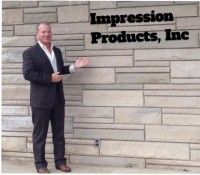In a profile by Forbes, Impression Products’ Eric Smith discussed how the Lexmark case began.
The profile saw Smith discuss the business and its case against Lexmark. The case was decided in Lexmark’s favour earlier this year, with the US Court of Appeals ruling that the US remanufacturer had “infringed Lexmark’s patents by marketing refurbished Lexmark cartridges that originally were sold with ‘single use’ or ‘no resale’ restriction in the US and abroad”.
The case began when Impression was named in an IP infringement case in October 2013 referring to the “unlawful importation […] the sale for importation and/or the sale within the United States after importation” of a number of infringing remanufactured and cloned aftermarket cartridges. Impression moved to dismiss claims and overturn Jazz Photo, which impacts on patent exhaustion, or the “first-sale doctrine”, influenced by the Supreme Court’s ruling in the Kirtsaeng case in 2013, which prevented copyright owners from stopping imports and reselling content sold abroad.
The ruling in February decided that Impression “infringed the patent rights of Lexmark […] when it imported Lexmark’s toner products back into the United States after they were first sold abroad”, as well as that it was “liable for selling refurbished Lexmark cartridges that were originally marketed for a single use under its return and recycle programme”. Recently however, the US government backed an “overturn” of the decision, and “urged” the Supreme Court to review it.
Smith noted that since the “early 1990s”, the company has “bought used printer cartridges, refurbished and filled them with ink, and resold them to offices across West Virginia”, having started as a dealer in typewriter ribbons in 1979. He noted that its remanufactured cartridges “cost about half new brand-name cartridges”, and include “a warranty […] where we will service their machine as well”.
It employs 25 staff and generates between $10 million and $15 million (€9.4 million and €14.1 million) in sales, with the legal case putting “much of that business […] in jeopardy”, with its implications threatening “not just thousands of businesses in second-hand markets but also retailers and manufacturers of new products with sophisticated technologies”. Smith noted that in 2010, he began “finding cease-and-desist letters from Lexmark in his mail”, at first noting that he “just ignored the notes”.
He added that “I thought they were bluffing. I figured at the end of the day, they didn’t want the bad press — picking on other companies”, but “eventually, they sent someone out here to serve me papers”. Having been added to the case in 2012, every other remanufacturer named settled, but Impression “counter-sued”, with the case becoming a fight about “patent exhaustion”. The company previously spoke about the case to local press as well.
Impression’s lawyer, Paul Hughes, stated that “if you can lawfully restrict patent exhaustion, it applies to third party, downstream users who never entered into agreement with you. When Eric agreed to work with us, I was just thrilled because this was a problem in the law for some time and finally we have a chance to fix it once and for all”. His view was that should the Supreme Court take the case, it would be argued next March and a decision would be given in June.
Smith said that if the decision stood, the company “would survive” but “might lose as much as 30 percent of his business”, though he’d “also make a point of steering customers away from Lexmark printers and toward competitors”. He added that the case “has turned into something of a boon” for the company, using the attention “into new business opportunities […] particularly among other companies that have a stake in the outcome”.

